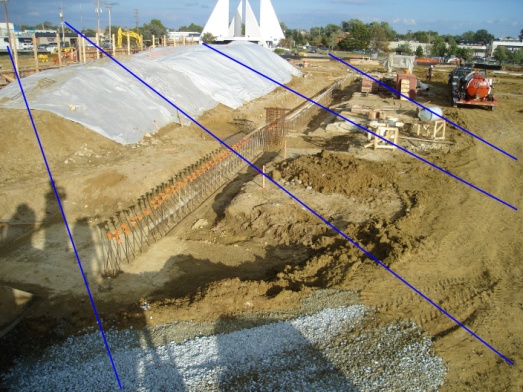Challenge
Annapolis Towne Center, located in Parole, on the outskirts of Annapolis, Maryland, is a major redevelopment project featuring mixed commercial and residential construction at a site that had been a regional shopping center for 60 years.
The site was impacted by a dry cleaning facility that operated for 60 years, resulting in extensive soil and groundwater contamination. An in situ chemical oxidation system needed to be installed while construction activities were ongoing, but it needed to be completed before crane operations began. Potassium permanganate injection needed to continue under high-rise buildings during and after their construction.

Solution
Directional Technologies was retained to install 10 single-entry horizontal permanganate injection wells under the future building sites, and 5 single-entry horizontal soil vapor extraction (SVE) under the active dry cleaning facility. Key components of this project include:
- Drilling under a large, active construction site
- Use of a single-entry boring
- Precise location on a boring and placement of conduit to avoid building foundations and elevator shafts
- Coordinating drilling operations with other large-scale construction operations at the same site to allow uninterrupted construction operations
- Installing a critical operating system
Working alongside road and building construction imposed severe logistical restrictions during the horizontal remediation well installation, and necessitated a fast-track installation program. Access restrictions at one end of the site were overcome by installing single-entry, or “blind” wells.
The Technology
Directional Technologies, Inc. set up its directional drilling equipment at locations that did not impede movement of other construction equipment. Ten parallel horizontal remediation wells were installed in a cross-gradient direction to inject potassium permanganate (KMNO4) solution. Well screens were between 130 and 330 feet long. Some of the horizontal wells were installed in pairs, with screens placed in target zones at 30-foot and 40-foot depths, respectively. The use of horizontal remediation wells enabled injection into 10 horizontal wells instead of what would have been 120 vertical wells, and minimized the system footprint on the site. The ability to inject at 10 points into 2300 feet of well screen allowed for a higher injection rate than would have been accomplished using vertical wells. This resulted in an injection rate of 1.03 million gallons of KMNO4 solution in a 26-day period.